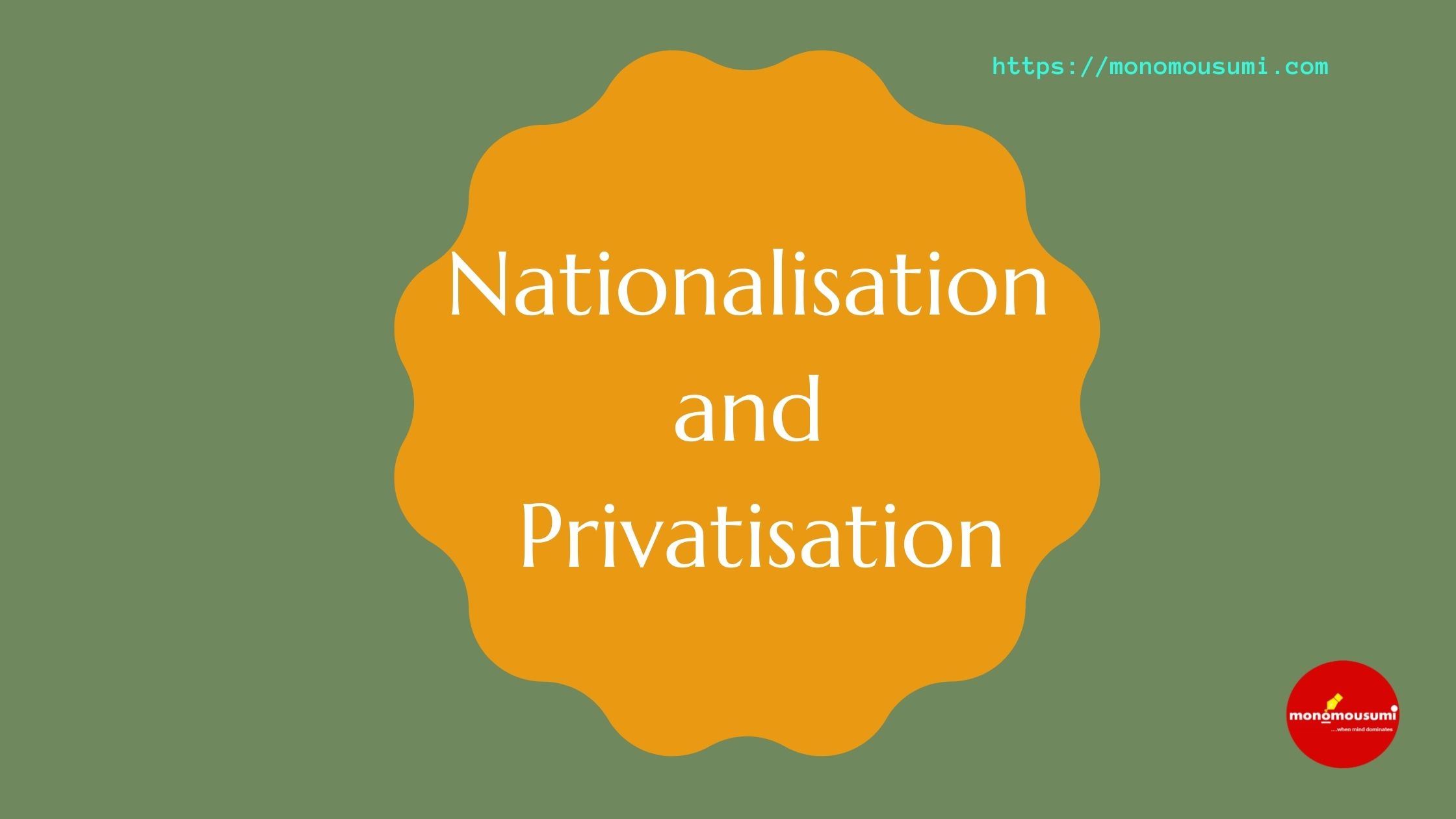
A cartoon published in a daily newspaper made some people think about the outcomes of nationalisation and privatisation. The cartoon was showing some rats coming out of a government food godown once it got privatised. The cartoon made us assume that these rats were eating the food grain peacefully inside as long as the godown was managed by the government officials but when it came in the hands of a private entity, the rats had to look for another shelter. Perhaps the cartoon was questioning the government’s ownership and control. So let’s find out the meaning of nationalisation and privatisation first. When the ownership of a company or means of production is transferred from a private entity to the state or to a government owned entity, the process is termed as nationalisation. The other process, privatisation, is just the opposite, leading to the transfer of ownership from the government to one or more private entities.
Since the dawn of Independence, India being a socialistic country, the economy largely remained state run. The Government of India nationalised 14 commercial banks in 1969 and 6 in 1980. The nationalisation helped in increasing the penetration of bank branches in India especially in the rural areas and helped the people to have access to the banks which was earlier only for the rich and privileged classes. Nationalisation helps in public welfare and inclusive growth of the country. It ensures the social and economic justice mentioned in the preamble of our constitution through equitable access of basic services such as education, health and digital services to every citizen without any discrimination. Indian Space Research Organisation (ISRO), Defence Research and Development Organisation (DRDO), Bhabha Atomic Research Centre ( BARC ), Indian Institutes of Technology (IITs), Indian Institutes of Management (IIMs), Council of Scientific and Industrial Research (CSIR), All India Institute Of Medical Sciences (AIIMS) and National Council of Educational Research and Training (NCERT) are some of the successful government owned institutions which contributed tremendously in the nation building and improving the quality of life of the common people. The problem with nationalisation is that it is not as efficient as the private institutions. The decades old bureaucratic structure and frequent political interference made the functioning of most of the government institutions quite slow. Due to these reasons many of the public institutions are in huge loss and some are even struggling for their survival. Air India and Bharat Sanchar Nigam Limited (BSNL) can be cited as a few examples. Ultimately the citizens of our countries are at loss as they are getting poor quality of service. The quality of health and education in the government institutions especially in the rural areas is very poor. Same is for the Indian Railways and Public Sector Banks. They are not meeting the expectations of the customers (citizens). Leakage and corruption has further aggravated the problem.
Three decades ago, in 1991, the Government of India launched the economic reforms termed as Liberalisation, Privatisation and Globalisation (LPG) reforms to facilitate the private sector to contribute to nation building which is still ongoing. Differing from nationalisation, privatisation provides expertise to the institutions and ensures efficiency in its functioning. The private entities hire the best talent from the open market and focus on innovation, research and development to deliver the best quality services to its customers. Big convent schools, multi storey hospitals and long expressways can be a few examples. The problem with the private sector is the high prices. Although they deliver good quality service, it is not possible for the common people to pay the hefty fees they charge. For example, a poor farmer can not afford to send his/her child to a convent school located in the city and an ordinary passenger may not be able to pay the fare of a corporate train like Tejas. The private institutions have nothing to do with social welfare. Following the capitalistic ideology, their first aim is to earn more and more profit. Some of them do not even follow the corporate ethics. They do not care about the welfare of their workers. They take the maximum output from their workers at minimum payment. The workers have no right to decide their wages, it is up to these capitalist people to decide the same. This all is creating concentration of wealth in the hands of few, making the rich richer and the poor poorer. As per an Oxfam report – The Inequality Virus, the wealth of Indian billionaires increased by 35% during the first wave of COVID-19 in India when most of the poor Indian were out of a source of income. According to another report of Oxfam, 42.5% wealth is held by just 1% of the richest population. The 10% richest people hold 74.3% wealth while the bottom 90% hold only 25.7% wealth. They also create regional disparity by focusing only on profitable regions. For example, Very few private airlines like to operate from the smaller airports such as Kanpur, Gwalior, Agra and Khajuraho as these are less profitable to them. Similar to nationalisation, they may also fail due to mismanagement or wasteful expenditure. Kingfisher Airlines, Firestar Diamond, Jet Airways, Yes Bank, Lakshmi Vilas Bank are some examples. The chances of corporate political nexus can not be ruled out where a private entity helps a particular political party to win the election through political funding and in return, the political party favours the company once it gets elected.
The current policy of the Government of India to privatise all the non-strategic Public Sector Undertakings (PSUs) and keep maximum four PSUs in strategic sectors including Public Sector Banks (PSBs) will definitely lead to increase in efficiency in their functioning but the services may not be available to all. It is not possible for an ordinary person to get an account opened in a private bank due to their heavy minimum balance limit and other charges. No one can doubt the education standard of a private school but not everyone can afford it. There should not be a system where the rich have access to high quality services while the poor are queuing in government offices. First solution should be to improve the management of the public institutions and focus more on research and innovation. Unnecessary political interference should be eliminated. The selection of all the heads of the public institutions should be done based on the recommendations of Search-cum-Selection Committee ( SCSC). Second, the government needs to promote regulated privatisation so that we can get the benefits of privatisation and at the same time, the private companies do not turn profiteer. There should be a price capping mechanism for certain defined items such as school fees, hospital charges for different treatment and diagnostic tests etc. as the government did for the COVID-19 vaccines. Strict Actions should be taken against the unethical practices if followed by any private or public entity.
Thus, the government should act as a facilitator to ensure pro-business, pro-labourer and pro-poor environment. The growth in Gross domestic product (GDP) and Gross National Happiness (GNH) should go hand in hand. The aim of the state should be to follow the directives under article 38 of our constitution to promote the welfare of the people, secure social, economic and political justice and minimise the inequalities.
By Ravindra Kumar


